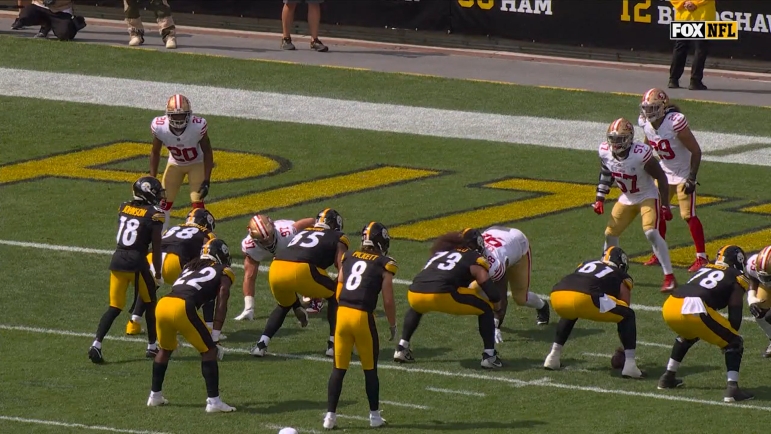If you’re wondering why the Pittsburgh Steelers don’t have a rushing touchdown or why rookie TE Darnell Washington is ignored in the passing game, it’s largely because the Steelers aren’t running any plays inside the 20. As a byproduct of their lifeless offense that’s only sparked with the big play, three touchdowns of 40-plus yards this season, Pittsburgh just hasn’t gotten in the red zone.
On the year, they have only seven red zone trips. Only six of them have been “true” possessions, the other the team kneeling down the ball after T.J. Watt’s fumble recovery against the Baltimore Ravens in an attempt to bleed the clock.
To take that a step further, excluding kneel-downs, the Steelers have run just 21 plays in the red zone this year. That’s, unsurprisingly, the lowest number in football. They’re one of only three teams to even be under 40 total snaps, joining the Cleveland Browns (26) and New England Patriots (28).
In fairness, the Steelers had an early bye week. But on a per-game basis, Pittsburgh is averaging 4.2 red zone snaps per game, also the lowest number in football behind the 31st-ranked Patriots at 4.7.
If you think it can’t get worse, buckle up. Of those 21 snaps, more than half of them came in Week One to San Francisco, a 30-7 blowout loss. In that game, 12 plays were run inside the red zone. Over their next four games, they had just nine, barely more than two per game. Here are the week-by-week numbers.
Red Zone Plays:
49ers Game: 12
Browns Game: 0
Raiders Game: 1
Texans Game: 5
Ravens Game: 3
Incredibly, the Steelers have run just four red zone plays across their three victories. In theory, if Pittsburgh was quickly finding the end zone, these numbers wouldn’t be as offensive. But they’re not. Pittsburgh has just two red zone touchdowns on their trips this season, the worst percentage in football. With that, you get a team that has zero rushing touchdowns through their first five games, a literal franchise first. A 6-foot-7 tight end like Darnell Washington without a target in the red area, let alone a catch. And it’s one reason why this offense can’t put points on the board, failing to even average 13 per game.
On the year, Steelers’ opponents have run 44 plays inside Pittsburgh’s 20, making it more than a 2:1 ratio in the opposition’s favor. It’s a balance that wasn’t seen in Pittsburgh last season. In 2022, the Steelers’ offense ran more red zone plays (152) than the defense allowed (138).
Yes, some of this is low-hanging fruit. Another, “guess what, the Steelers’ offense is bad!” article that you already pretty much knew. Around here, the beatings will continue until morale improves. But it’s another stat that illustrates the Steelers’ sustainability concerns. They are 3-2, right in the thick of the AFC North, and the fact they’re in this spot is nothing short of amazing in a “I don’t know how you did it” sort of way.
But unless Pittsburgh can change some of these core metrics, they can’t win over an 18-week season this way. There’s just no chance. Even in their post-bye turnaround, they became a more effective offense that chewed up the clock, moved the sticks, and finished off way more drives, even if scores were still low and victories ugly. Pittsburgh can’t win with their current model. Red zone production, down to the number of plays they run, will be one of several key numbers moving forward.








